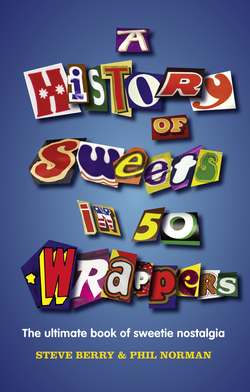Читать книгу A History of Sweets in 50 Wrappers - Steve Berry, Phil Norman - Страница 15
ОглавлениеEaster bon-bonnet. Cadbury’s Creme Egg (1971).
Though various fondant-filled eggs had been produced by Cadbury since 1923, it wasn’t until decimalisation that the Brummie confectioners finally cracked it with the consumer. That consummate assemblage of foil wrapper, chocolate shell, thick sugary albumen and all-important yolk centre debuted amid precious little fanfare. (Readers in Scotland had their own chocolate-filled egg.)
A short TV spot encouraging the customary Jennings-like schoolchildren to overwhelm shopkeepers with demands for ‘6,000 Creme Eggs, please’ failed to take into account the limited means of the audience. But the marketers persisted and eventually hatched a television campaign based around a reworking of Cole Porter’s genteel and only slightly racist song, ‘Let’s Do It’, which saw all manner of shy debutantes, maiden aunts and girls in France falling for the irresistible charms of the ovoid snack. Impressionable kids scrambled to empty their piggy banks and helped boost sales from around 50 million in the mid-’70s to nearly 200 million by the early ’80s.
In 1984 Cadbury’s creative agency, Triangle, no doubt spurred on by the success of Masquerade, Kit Williams’s kids’ book, conceived an unashamedly derivative national treasure hunt for twelve golden eggs. Caskets were buried in far-flung corners of the countryside (though one, discovered accidentally, nearly blew the lid off the whole enterprise) and Creme Egg fans were invited to send off for, and solve, the Conundrum. Within three months, Cadbury had to call a press conference to halt overzealous punters digging up stone circles, hill forts and Christian burial sites in search of the £10,000 (‘Garrards certified retail value’) eggs. As far as slogans go, ‘Stop looking on or around Pendle Hill and the Wrekin’ is about as off-brand as you can get.
Foiled again? Cadbury makes it difficult for treasure hunters to poach themselves a golden egg.
Scotch egg. Cadbury’s Border Creme Egg (1970) eschews sausage and breadcrumbs in favour of a chocolate fondant centre.
However, all this hedge-hopping hadn’t gone unnoticed and Cadbury’s rivals soon poached the egg idea for their own retail lines. Rowntree introduced both the Toffee Mallow and Fresh Minty Egg (in 1982), and Terry’s hit back with the Nutcracker (ostensibly the same shape, only wrinkled, filled with caramel and nuts), then, in 1988, the ill-advised ‘indulgent novelty’ that was the Pyramint. Aimed at an older market, and fabulously advertised by the voice-artist dream-team of Leslie Phillips and Kenneth Williams, both hamming it up for all they were worth with an Egyptian mummy, it was a massive flop.
Too large, too unwieldy and too messy to eat, Pyramint barely survived three years before being resurrected in a four-segment bar format and then quietly interred for a million years. The Creme Egg, however, continued to grow (not literally, it has genuinely always been the same size). In 1986 the question ‘How do you eat yours?’ was raised, backed by an in-store promotion inviting shoppers to collect fifteen wrappers and send in for a free ‘computer-produced personality analysis’. (RESULT: YOU ARE BEREFT OF LOVE AND FILL THE ACHING HOLE THAT REMAINS WITH CHOCOLATE.) Then, in 1992, Cadbury’s very own Easter Bunny laid her first Caramel Egg (again, not literally; that would be the weirdest cartoon ever). The nest, as they say, is history.
The yolk’s on you. Cadbury’s Easter catalogue leads with a ‘cracking’ pun for 1986.
